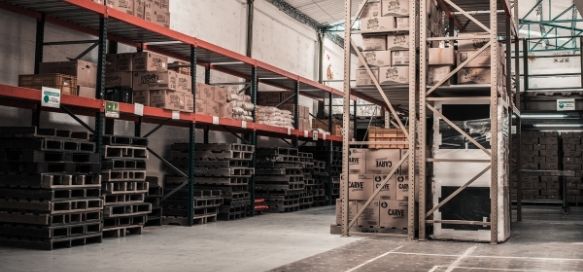Supply chain management can be referred to as the management of the flow of goods and services within a business. This also includes the management of raw materials, inventories, and finished goods while also ensuring order fulfillment for the customer. Supply chain management is an interconnected and interlinked business objective that seeks to build net value, give rise to a competitive infrastructure, and leverage logistics.
What exactly is logistics?
Logistics is the name given to the component of supply chain management that involves the planning and enforcement of managing goods, services, and information efficiently – from the source to the point of consumption. Logistics involves shipping, imports, exports, transportation, warehousing, inventory management, customer purchasing, and customer service. Without logistics, the supply chain could be ineffective and there would be a complete lack of coordination in the management of goods and services.
How does logistics make the supply chain more efficient and cost-effective?
When partnerships are created between suppliers, shippers, and warehouses, it becomes easier to manage an automated system to monitor the activities of each. Delivery is quicker and the costs associated with the management of each activity is lowered effectively. An automated system simplifies communication and flow of services between each sector and improves the cohesiveness of operations. Costs are further monitored by looking into supply forecasts, inventory management, quality shipping, and timely delivery to the customer.
How the logistics sector is evolving
The logistics sector and supply chain management of businesses are constantly changing to keep pace with modern advancements. The end user now utilizes their smart devices to place an order, expecting it to be at their doorstep within a day or two. At this pace, companies can profit only if they offer quick and efficient services, and this can only be done by upgrading the logistics of their supply chain. New improvements can be brought in to expedite the rate at which orders are confirmed and sent out, while also monitoring cost-effectiveness and time frames. When a detailed and effective logistics model is in hand, companies can definitely benefit from a more concise business operation mode while ensuring high customer satisfaction.
What are the latest trends to look out for in logistics?
Modern-day businesses require modern-day solutions, and the need for advanced logistics and supply chain management is more crucial than ever. Here are some of the prominent recent trends that will make their mark in logistics in the years to come.
- Supply chain digitization with IoT
Digitization essentially means using the latest technological solutions to keep up with the fast-paced environment of supply chain management. In today’s context, there is a special focus on the Internet of Things or IoT. This branch essentially refers to the interconnectedness of devices and how they facilitate smoother transition of information without the need for human intervention. Considering how IoT is already making its way to a number of households, its utilization can significantly help businesses monitor their inventory, optimize fleet routes, minimize dead mileage, and manage warehouse operations effectively.
- Artificial Intelligence (AI)
Making use of AI can significantly advance logistics and supply chain management for every provider out there. The advent of gesture recognition solutions minimises the need for big physical computers, whereas self-driving cars and robots can navigate warehouses without the need for human effort. With several tech companies offering advanced robotics solutions that are easier to program, more flexible, and more cost-effective, the business should shift their attention to AI at the earliest to reap big rewards.
- Circular supply chain
The current ‘linear’ supply chain model focuses on the movement of goods from point A to point B, that is, raw material to finished product. The circular supply chain concept has been gaining momentum of late, and it involves utilizing previously used products to generate raw materials for the next set of finished goods. Also called as reverse logistics, this novel approach can reduce administrative costs, minimize transportation expenses, improve customer service, conserve resources, and offer a sustainable approach – something that business and people are gravitating towards more than ever.
To conclude
Of course, there are several other logistics trends that can shake up the market and offer value. Currently, these three models are being tested and used on a large scale, and businesses have also reported noticing a significant improvement in their operations. Going forward, the goal is to streamline processes as much as possible, while also creating value with minimal resources.





